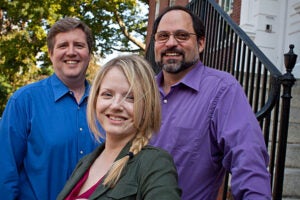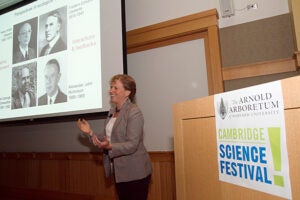Tag: Harvard-Smithsonian Center for Astrophysics
-
Nation & World
Water worlds surface
Astronomers have found a planetary system orbiting the star Kepler-62. This five-planet system has two worlds in the habitable zone — the distance from their star at which they receive enough light and warmth for liquid water to theoretically exist on their surfaces.
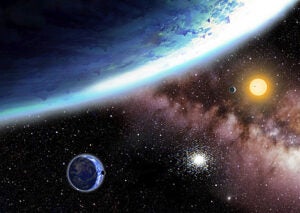
-
Nation & World
Putting the stars within reach
Two communications specialists at the Chandra X-Ray Observatory have authored a guide to the universe, aiming to show people around a universe they say belongs to us all.
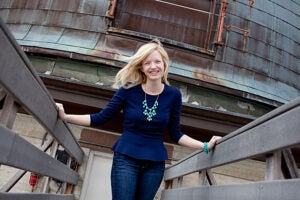
-
Nation & World
Stars align at astronomy reunion
Harvard astronomers past and present gathered in Cambridge Friday (April 5) for the first-ever reunion of the Harvard Astronomy Department.
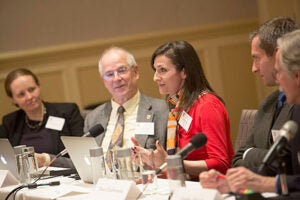
-
Nation & World
Space and climate change
A lecturer from the Harvard-Smithsonian Center for Astrophysics says that “dark clouds of gas and dust have the potential to alter Earth’s climate.
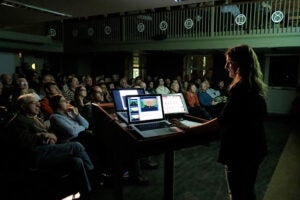
-
Nation & World
A learner’s guide to the universe
Harvard’s Avi Loeb is helping prepare the next generation of astronomers with a new textbook, “The First Galaxies in the Universe.”
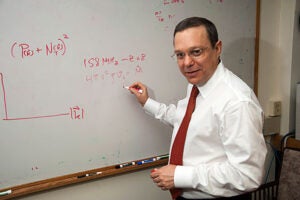
-
Nation & World
Dying stars source of life?
Researchers at the Harvard-Smithsonian Center for Astrophysics have found that even dying stars could host planets with life — and if such life exists, they believe we might be able to detect it within the next decade.
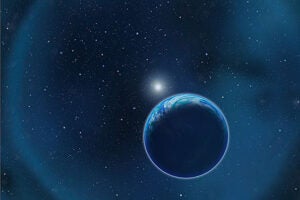
-
Nation & World
A clarion call for science
Harvard President Drew Faust called for the scientific community to unite in its efforts to press Congress for continued federal research support during a speech to the annual meeting of the American Association for the Advancement of Science.
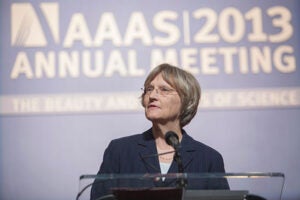
-
Nation & World
Astronomically close
Earth-like planets potentially capable of supporting life may be right in our galactic neighborhood, according to researchers from the Harvard-Smithsonian Center for Astrophysics and the California Institute of Technology.
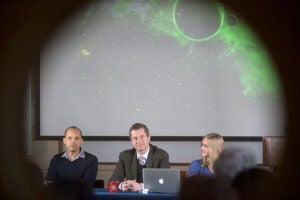
-
Nation & World
An idea that changed the world
Harvard celebrates the 100th anniversary of a computational principle that was little noticed in its time, but that underlies all of modern science.
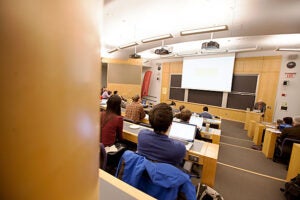
-
Nation & World
First ‘bone’ of the Milky Way identified
Astronomers have identified a new structure in the Milky Way: a long tendril of dust and gas that they are calling a “bone.”
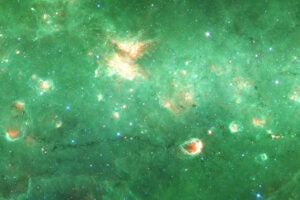
-
Nation & World
Search for Earth’s twin shows promise
The quest for a twin Earth is heating up. Francois Fressin, of the Harvard-Smithsonian Center for Astrophysics (CfA), presented the new analysis of Kepler data that shows that about 17 percent of stars have an Earth-sized planet in an orbit closer than Mercury.
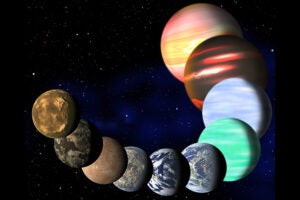
-
Nation & World
Good day, moons
CfA fellow David Kipping is heading a hunt for astronomical bodies at the edge of our ability to detect them: moons circling planets in other solar systems.
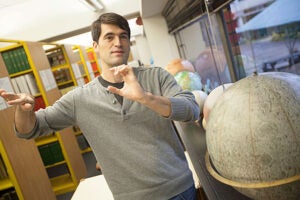
-
Nation & World
‘Point of no return’ found
Using a continent-spanning telescope, an international team of astronomers has peered to the edge of a black hole at the center of a distant galaxy. For the first time, they have measured the black hole’s “point of no return” — the closest distance that matter can approach before being irretrievably pulled into the black hole.
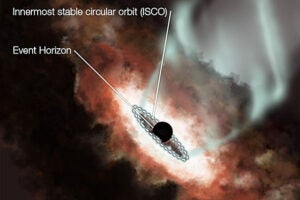
-
Nation & World
Planets form in cosmic maelstrom
At first glance, the center of the Milky Way seems like a very inhospitable place to try to form a planet. New research by astronomers at the Harvard-Smithsonian Center for Astrophysics shows that planets still can form in this cosmic maelstrom.
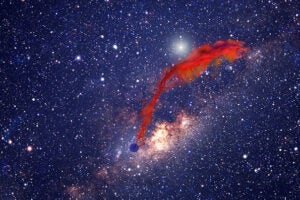
-
Nation & World
Capturing the stars
Alex Parker, a postdoctoral fellow at the Harvard-Smithsonian Center for Astrophysics, sees astronomical data as art as well as science.
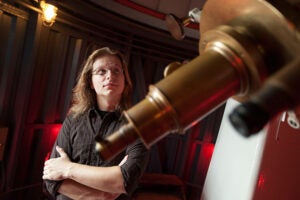
-
Nation & World
Re-creating a slice of the universe
Scientists at the Harvard-Smithsonian Center for Astrophysics and their colleagues at the Heidelberg Institute for Theoretical Studies have made it possible to build a universe from scratch.
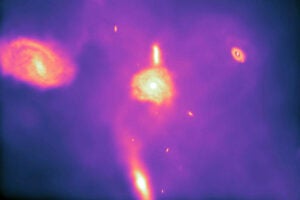
-
Nation & World
A Milky Way cooling its jets
Harvard-Smithsonian Center for Astrophysics’ astronomers have detected for the first time jets of gamma rays extending thousands of light years from the Milky Way’s core, confirming expectations based on observations of other galaxies.
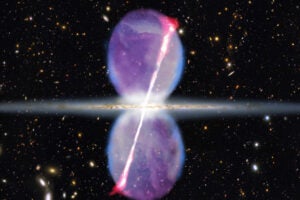
-
Nation & World
The last dance between Venus and the sun
Before 2004, the most recent Venus transit occurred more than a century ago, in 1882, and was used to compute the distance from the Earth to the sun. On June 5, 2012, another Venus transit will occur. Scientists with NASA’s Kepler mission hope to discover Earth-like planets outside our solar system by searching for transits…
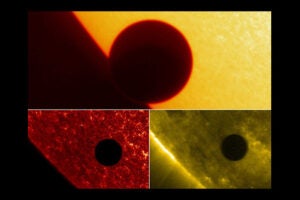
-
Nation & World
Black holes feed on stars
New research by astronomers at the University of Utah and the Harvard-Smithsonian Center for Astrophysics shows that supermassive black holes can grow big by ripping apart double-star systems and swallowing one of the stars.
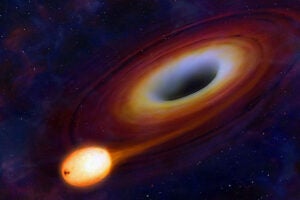
-
Nation & World
Planet starship
Seven years ago, astronomers boggled when they found the first runaway star flying out of our galaxy at a speed of 1.5 million miles per hour. The discovery intrigued theorists, who wondered: If a star can get tossed outward at such an extreme velocity, could the same thing happen to planets? New research shows that…
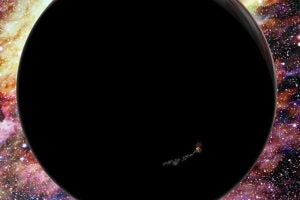
-
Nation & World
Using galaxies as yardsticks
Astronomy Professor Daniel Eisenstein is using a new understanding of spacing between galaxies to build a 3-D map of the cosmos and confirm theories about its structure.
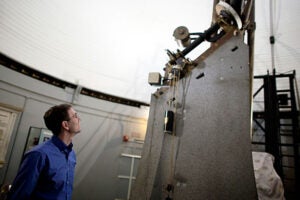
-
Nation & World
In distant space, a water world
Observations by NASA’s Hubble Space Telescope have added a new type of planet to the mix. By analyzing the previously discovered world GJ1214b, astronomer Zachory Berta of the Harvard-Smithsonian Center for Astrophysics and colleagues proved that it is a water world enshrouded by a thick, steamy atmosphere.
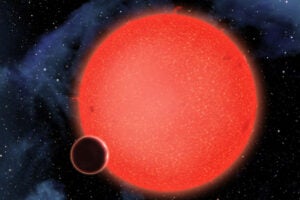
-
Nation & World
Black hole came from shredded galaxy
Astronomers using NASA’s Hubble Space Telescope have found a cluster of young, blue stars encircling the first intermediate-mass black hole ever discovered. The presence of the star cluster suggests that the black hole was once at the core of a now-disintegrated dwarf galaxy.
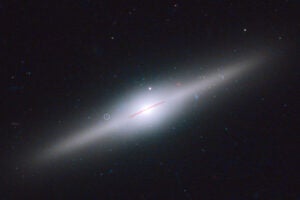
-
Nation & World
Alien worlds, just like home
Harvard astronomers, working as part of NASA’s Kepler mission, have detected the first Earth-sized planets orbiting a distant star, a milestone in the hunt for alien worlds that brings scientists one step closer to their ultimate goal of finding a twin Earth.
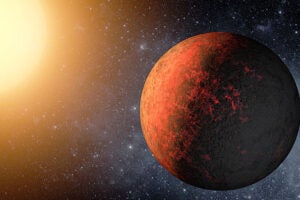
-
Nation & World
Powerful telescope has scientists seeing red
In the distant reaches of the universe, almost 13 billion light-years from Earth, a strange species of galaxy lay hidden. Cloaked in dust and dimmed by the intervening distance, even the Hubble Space Telescope couldn’t spy it. It took the revealing power of NASA’s Spitzer Space Telescope to uncover not one, but four remarkably red…
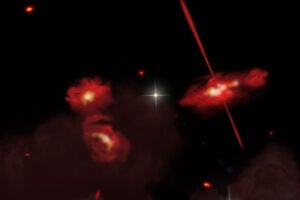
-
Nation & World
Bright idea
In a new paper, Avi Loeb of the Harvard-Smithsonian Center for Astrophysics and Edwin Turner of Princeton University suggest a new technique for finding aliens: Look for their city lights.
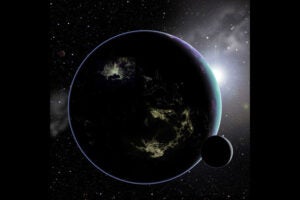
-
Nation & World
A tool to touch the sun
Harvard-Smithsonian Center for Astrophysics researcher Justin Kasper has designed an instrument that will peek out from behind a heat shield to touch the sun’s atmosphere on a NASA solar probe designed to get far closer to the sun than any before.
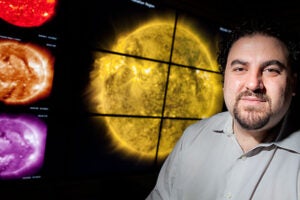
-
Nation & World
Nobel origins
All three winners of the 2011 Nobel Prize in physics have connections to Harvard — including two whose Ph.D.s launched them into their winning notion of an accelerating universe and the puzzle of dark matter.
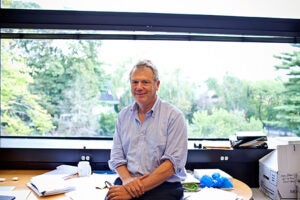
-
Nation & World
Scientific research, artfully shown
Researchers at the Harvard-Smithsonian Center for Astrophysics have embarked on an exploration unusual for space scientists — one involving art. A project probes how the presentation of images of space affects viewers’ appreciation and understanding of what’s happening in the pictures.
